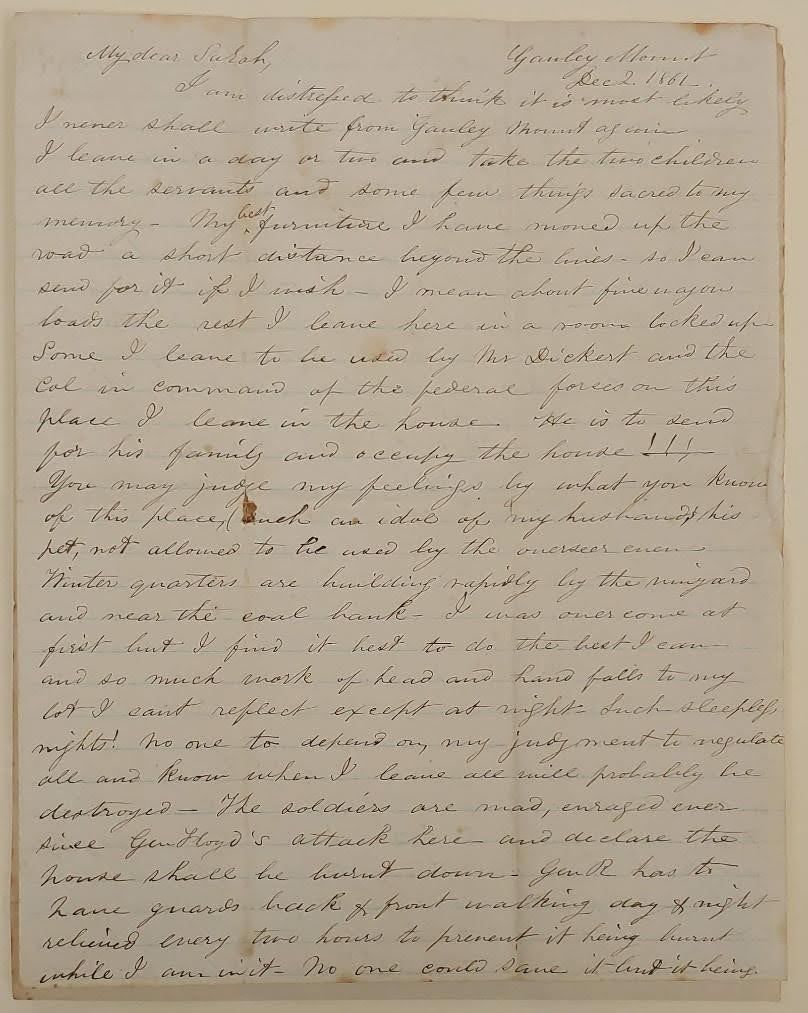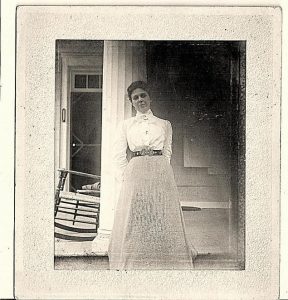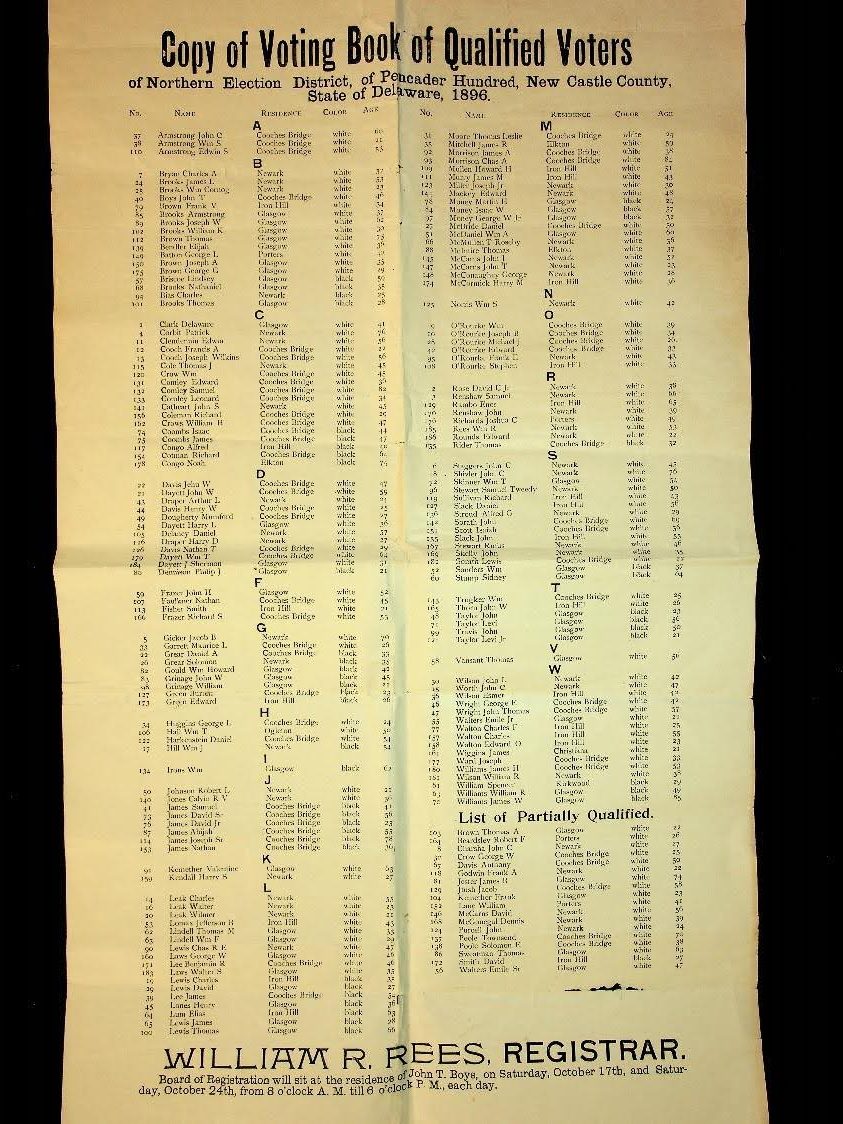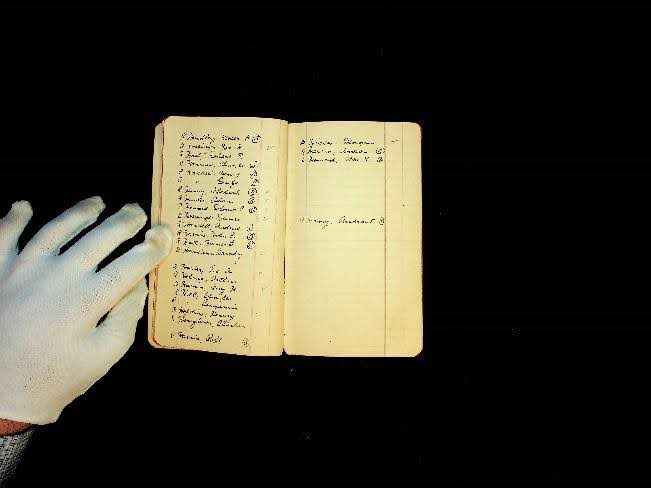Digitizing pieces of Cooch’s Bridge history
Scanning, transcribing and researching the Richard Rodney Cooch and Anne Bedford Cooch Doran Collection
By Leoné Cahill-Krout, Cooch’s Bridge historic site supervisor, and Wade Catts, professional historian
It is hard to imagine what a monumental task it must be to sort through and inventory nine generations of family objects, artwork, photographs, memorabilia and manuscripts. Starting in the summer of 2017, the Cooch Family retained the assistance of professional historian Wade Catts to take on the project. Catts initially began processing the documents in the Cooch house on a part-time basis. In 2019 the collection of more than 250 linear feet (approximately 140 boxes of records) was moved to a leased office space as the cataloging of the private family collection continued.
The Cooch Family’s intent was always to make the collection available to the public. To that end, records were donated to the Delaware Historical Society, the University of Delaware Archives, Connecticut College Archives, The Masons of Delaware and the New Castle Historical Society. At the end of January 2025, the majority of the Richard Rodney Cooch and Anne Bedford Cooch Doran Collection was officially transferred to the Delaware Public Archives where it will be available for study by Delawareans and interested researchers.
Prior to the transfer to the Public Archives, the Cooch Family generously provided the Delaware Division of Historical and Cultural Affairs access to the collection in order to scan images. The scanning project continued until January 2025 harvesting nearly 30,000 images.

The story behind the scanned images
Many Delawareans may be familiar with the unconfirmed yet colorful family lore of buried gold, Cornwallis’ quartering of horses in the parlor or the Betsy Ross flag’s first battle, but this scanning project has uncovered compelling true stories about the history of the Cooch property and family.
Letter of War: “My Dear Sarah” -1861

An unsigned letter, addressed to “My dear Sarah” and dated “Gauley Mount, Dec 2, 1861” was found among miscellaneous papers. Researching the letter, it was found to be written by Ellen Wilkins Tompkins to her sister Sarah Conant Wilkins Cooch during the American Civil War. Ellen was married to a Confederate colonel and her plantation, Gauley Mount located in today’s West Virginia, was occupied by federal troops. Ellen wrote numerous letters to her sister Sarah, and these were published in 1961 in the Virginia Magazine of History and Biography. This stray letter in the Cooch collection is remarkable because it sheds light on intersectional connections and provides insight into the effects of the conflict on the Cooch Family. Francis Cooch in the book “Little Known History of Newark and its Environs” (1936) notes that Sarah’s husband Levi G. Cooch acknowledged his Confederate relatives, but “wished for a cessation of fraternal strife.”
Delaware College – Women’s College opens in 1914

Eleanor Bedford Wilkins Cooch, wife of Lt. Governor Edward Webb Cooch, was another notable figure in the Cooch Family ancestry. Born to a wealthy family in Baltimore, she married Edward in 1906. Edward and Eleanor oversaw major home renovations from 1922-1924, which restored the home to the Colonial Revival style seen today. She was vice regent of the Daughters of the American Revolution and author of “The Ancestors of Eleanor Bedford Wilkins Cooch and Edward Webb Cooch. A Collection of Maryland, Delaware and New England Genealogies” published in 1962, as she was going blind due to diabetes.
During the scanning project, it became evident that Eleanor was one of the first young women to attend Delaware College, now the University of Delaware, when it opened the College for Women in 1914. Among her many journals and letters are included her cooking and sewing lab notebooks. The lab books are quite clinical and include chemical reactions of yeast, the process of making flour and equations for caloric energy conversions.
Eleanor’s accomplishments and her lab books shed light on what life was like during a time when women were marginalized.

‘Struck Gold!’ Primary source for research
Among the treasure trove of ledgers, receipts, deeds, photographs, letters and land surveys was found one of the most important documents among the collection.
This 1896 list of Qualified Voters in Pencader Hundred was discovered. It lists each voter by address, name, race and age. Fifty-three people here list Cooch’s Bridge as their residence. Twelve of the 53 are listed as Black.

In fact, the Cooch-Dayett Mill was both a post office and polling place, which is why the collection includes voter registration ledgers dating to 1904 for White Clay Creek Hundred and Pencader Hundred, which identify heads of household by race and political affiliation.
This singular document provides a basis for continuing research into the demographics of the community surrounding Cooch’s Bridge, as well as the social and legal inequities that may have impacted their lives, human rights and political power.
These lists provide another documentary source that could help researchers map the location, landowners, occupations, family sizes, races, religions, etc., therefore serving as a springboard to endless opportunities for research, interpretation and programming opportunities.

Acknowledgements: This HCA scanning project, conducted primarily by Cooch’s Bridge Historic Site Supervisor Leoné Cahill-Krout, could not have been done without the assistance of Dick Cooch, Anne Cooch Doran, Bruce Doran, Wade Catts and Lynn Riley, as well as other members of HCA’s scanning and transcribing team, Cody Brainard, Zeppelin Evans and James Scarborough. Their generous donation is worth more than the fabled buried chest of gold. And thanks to the scanning and transcribing team for their tireless work!


